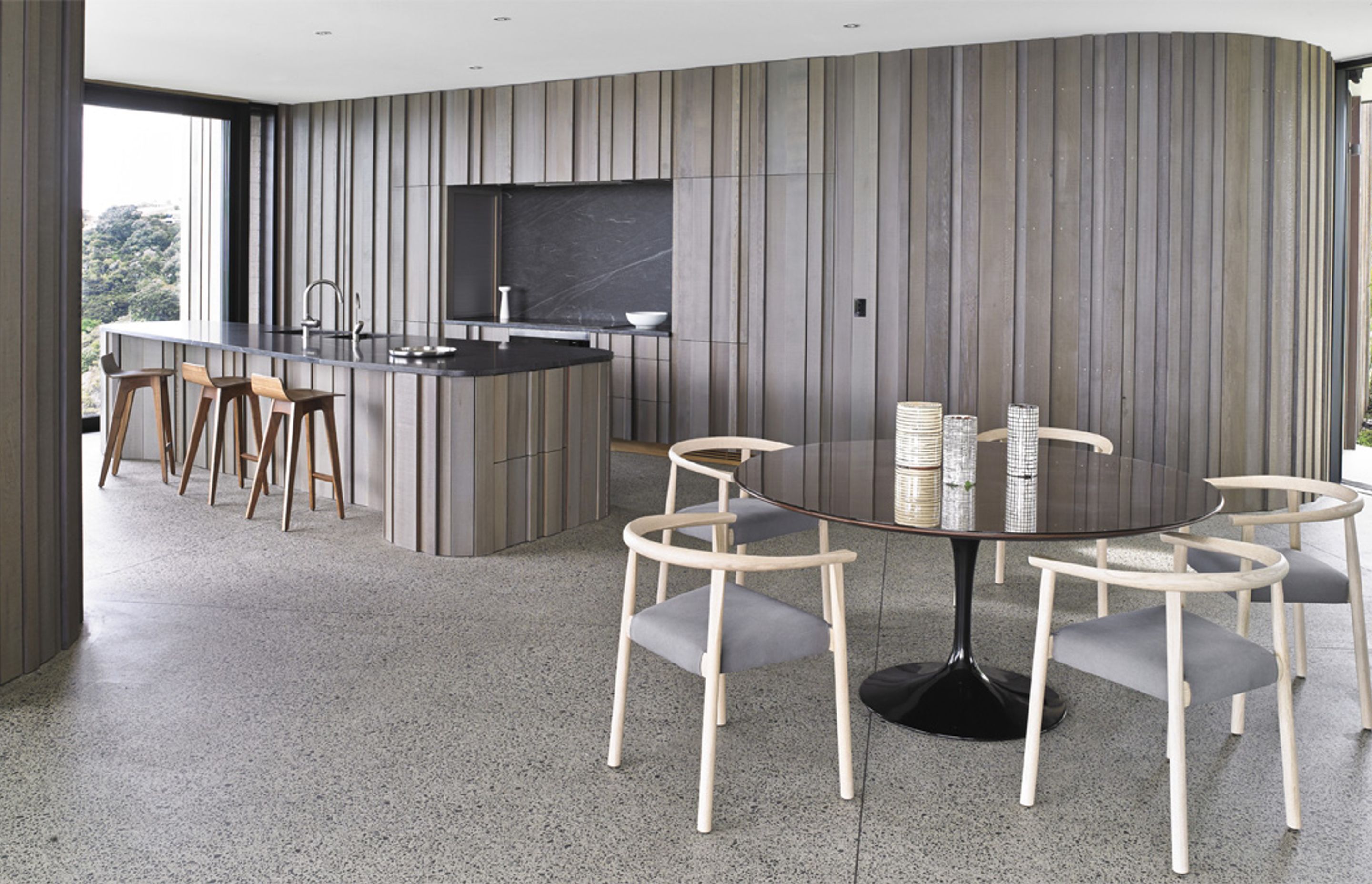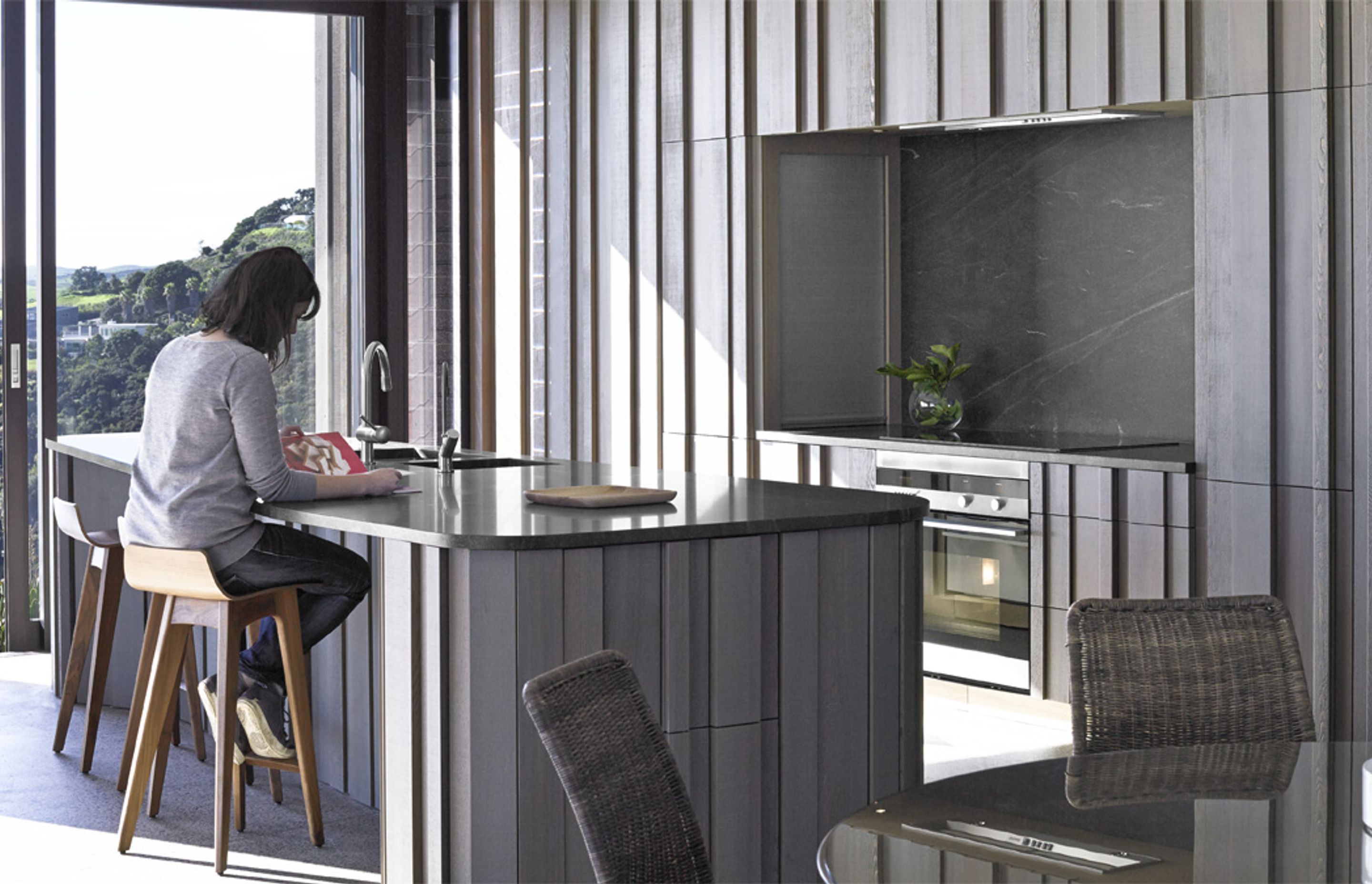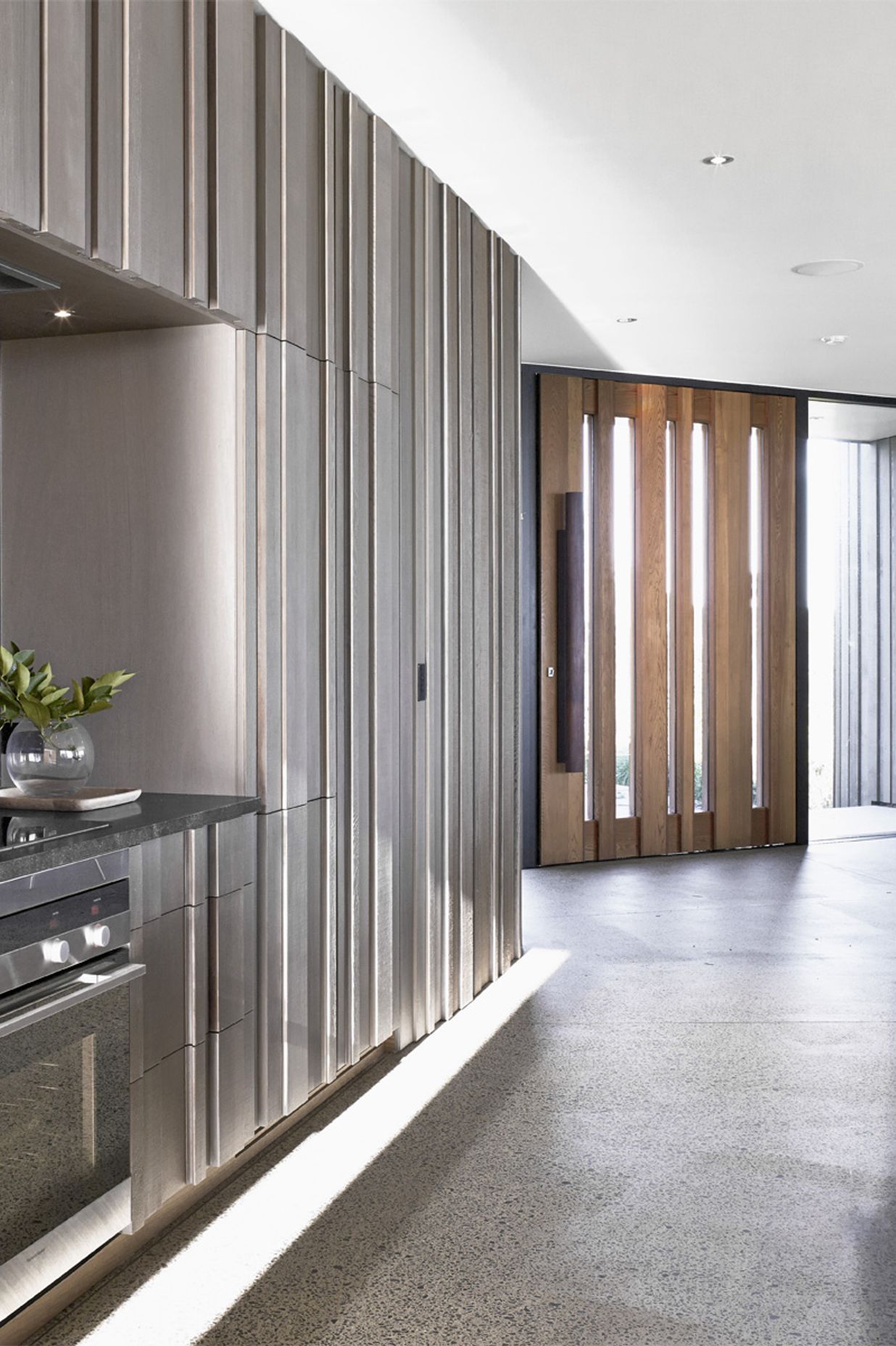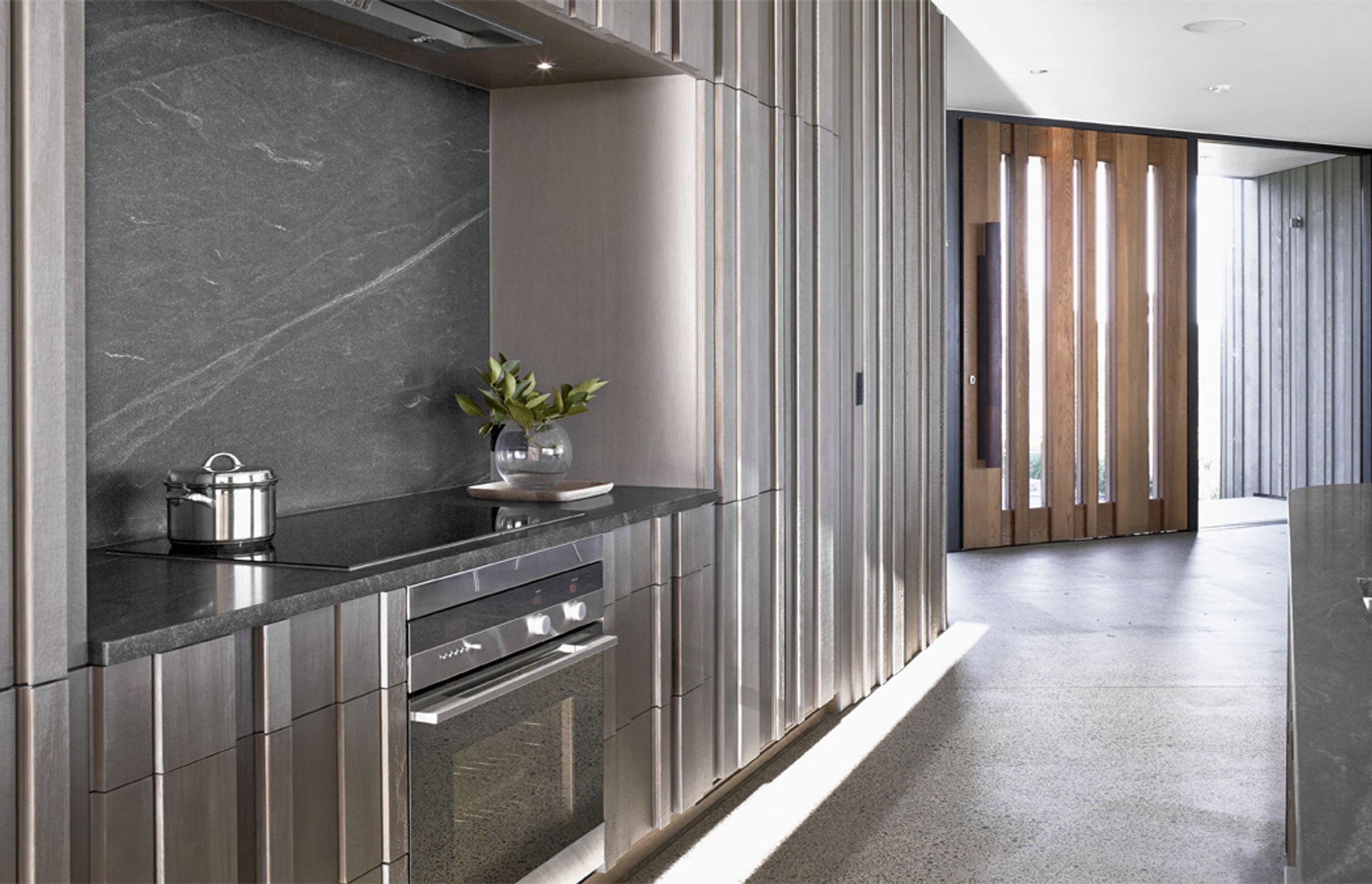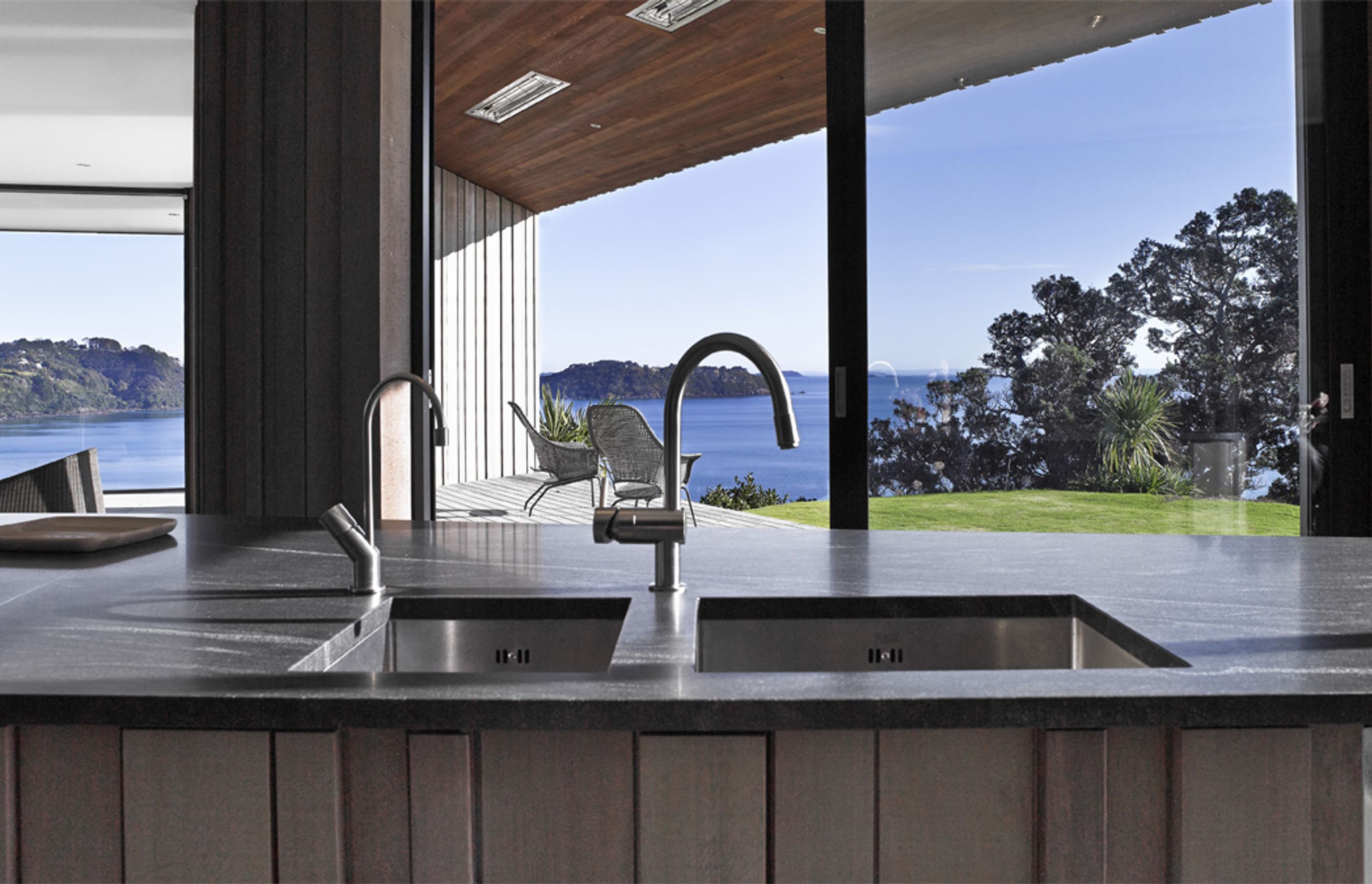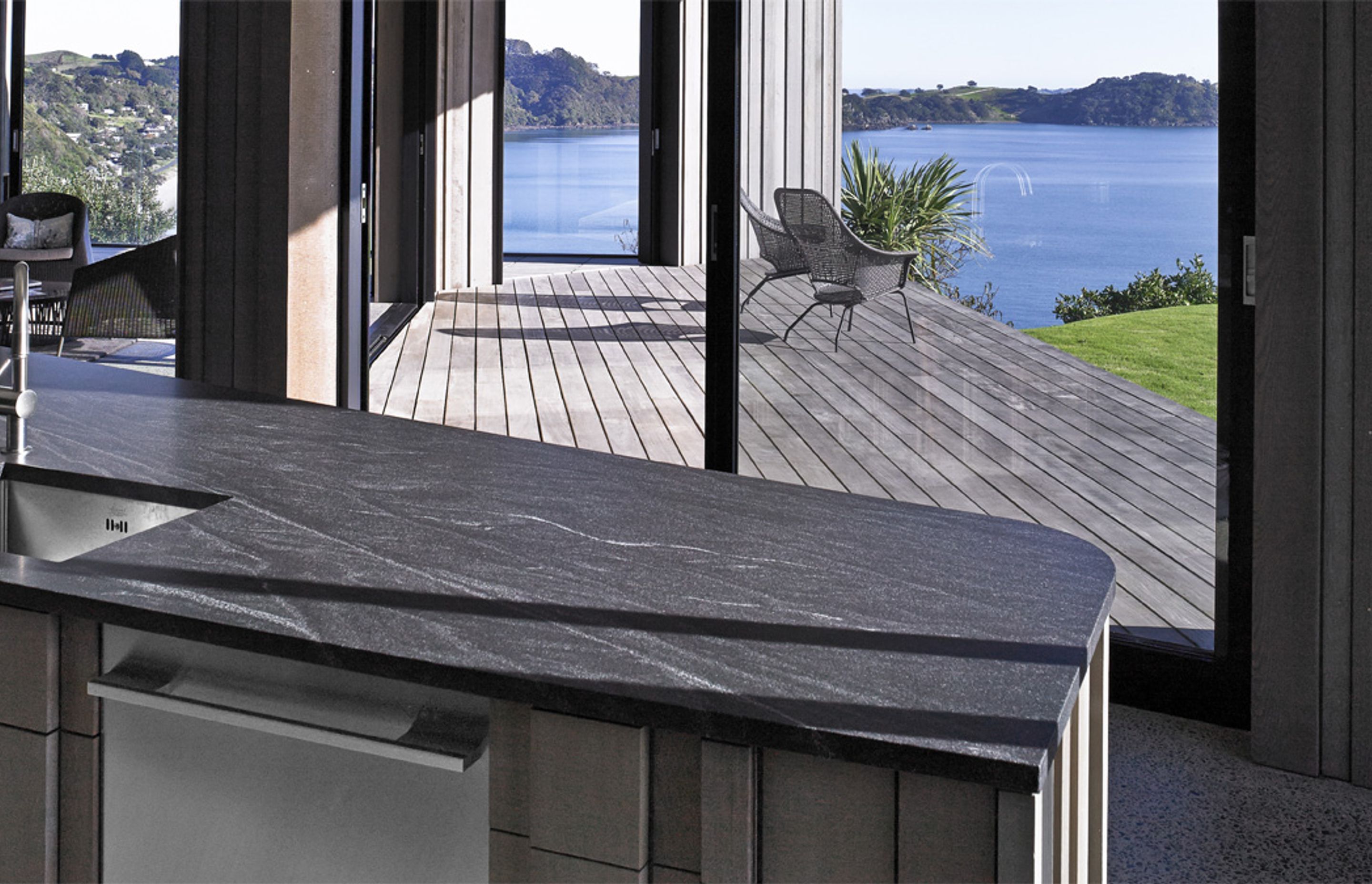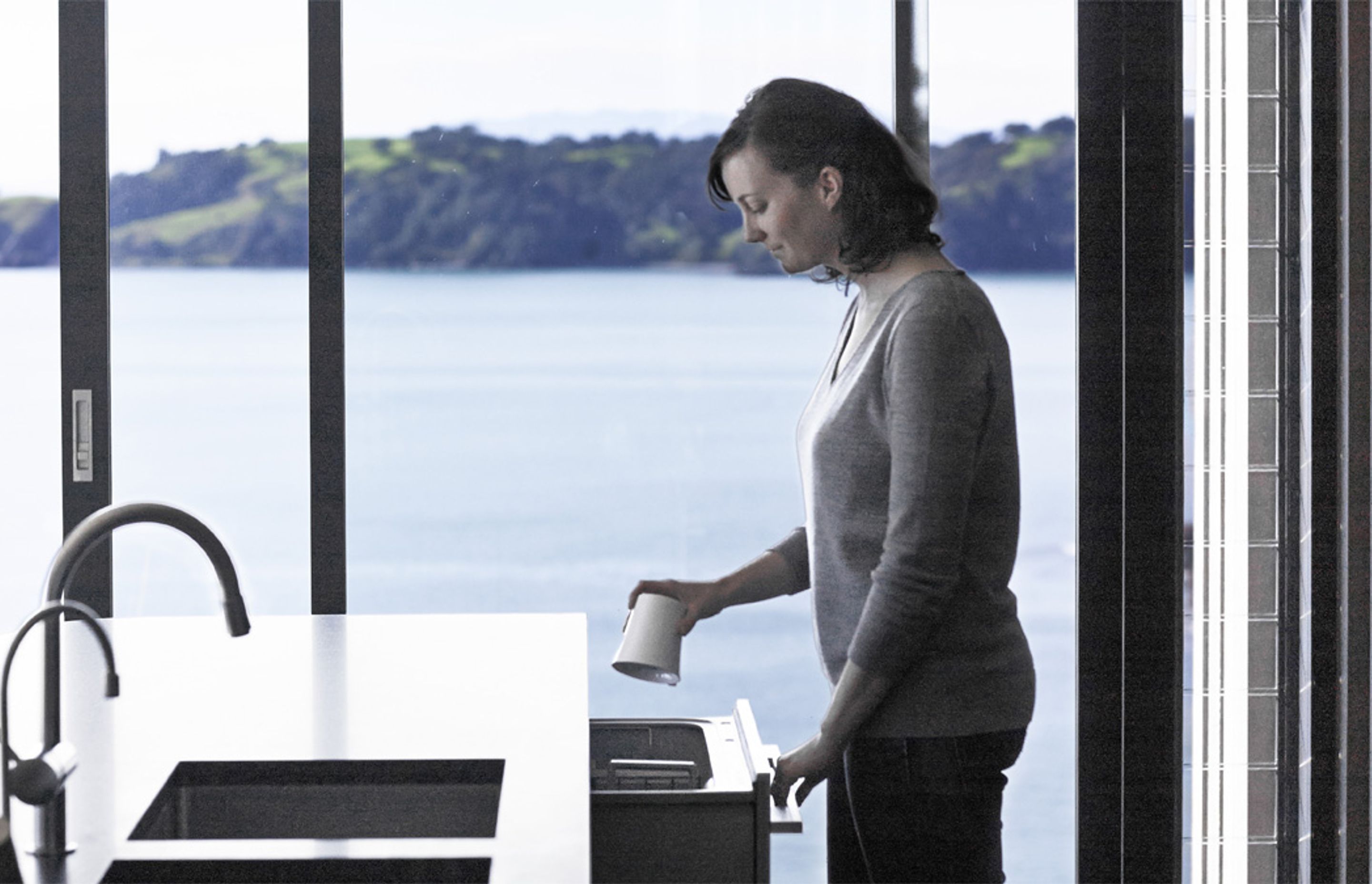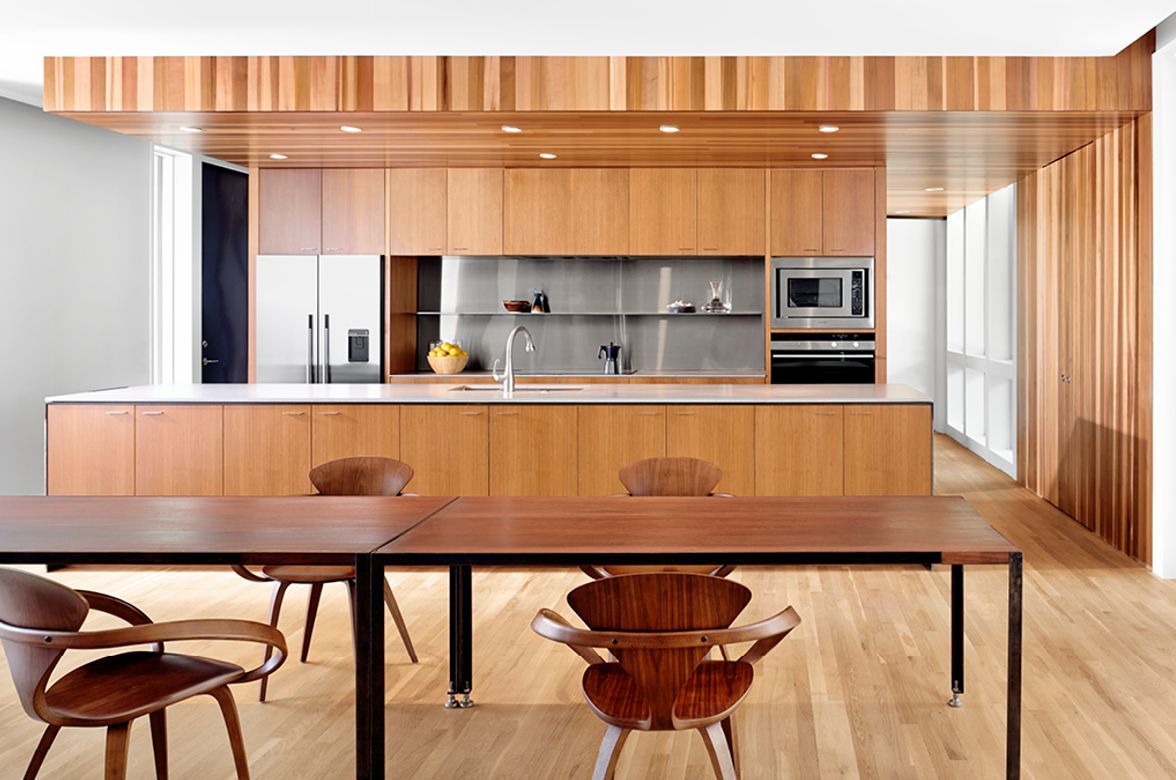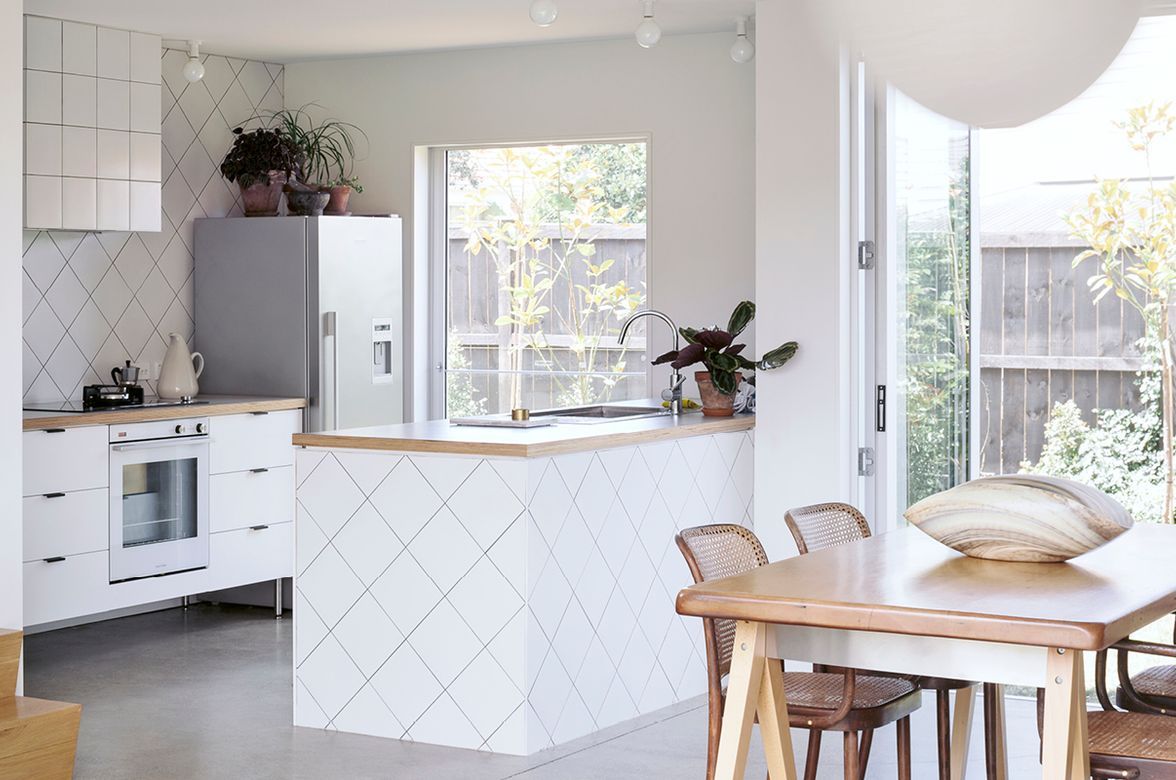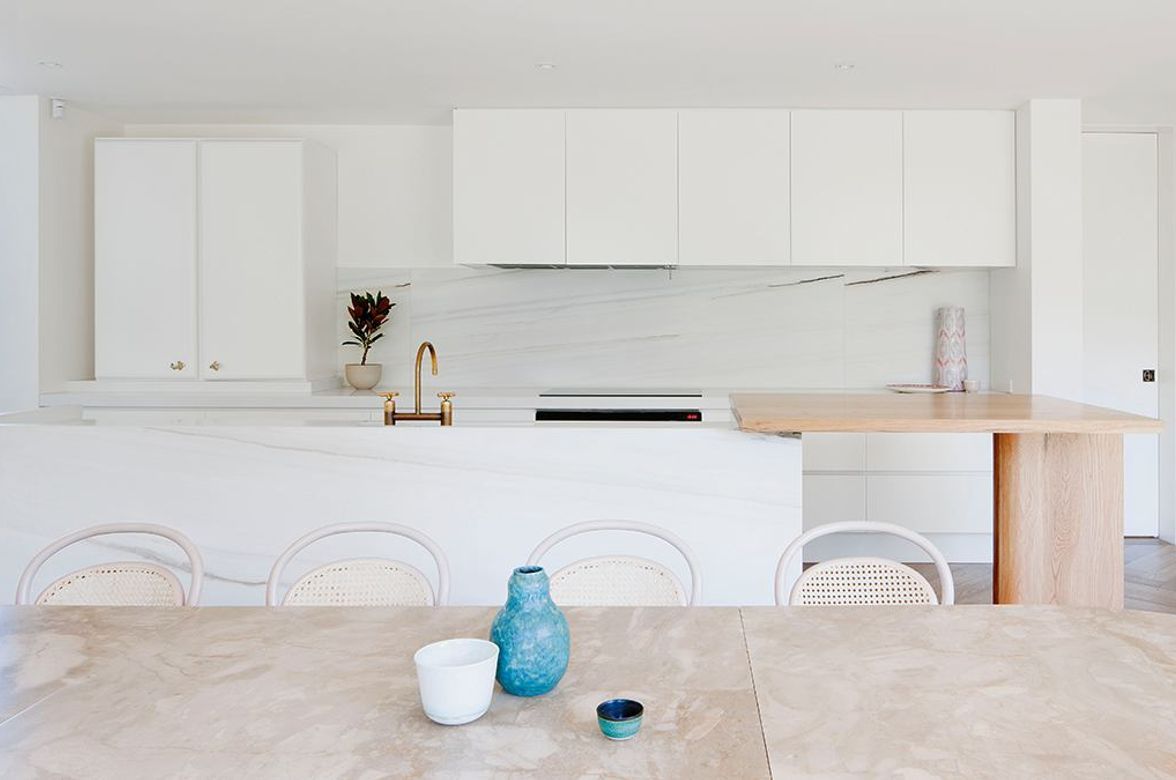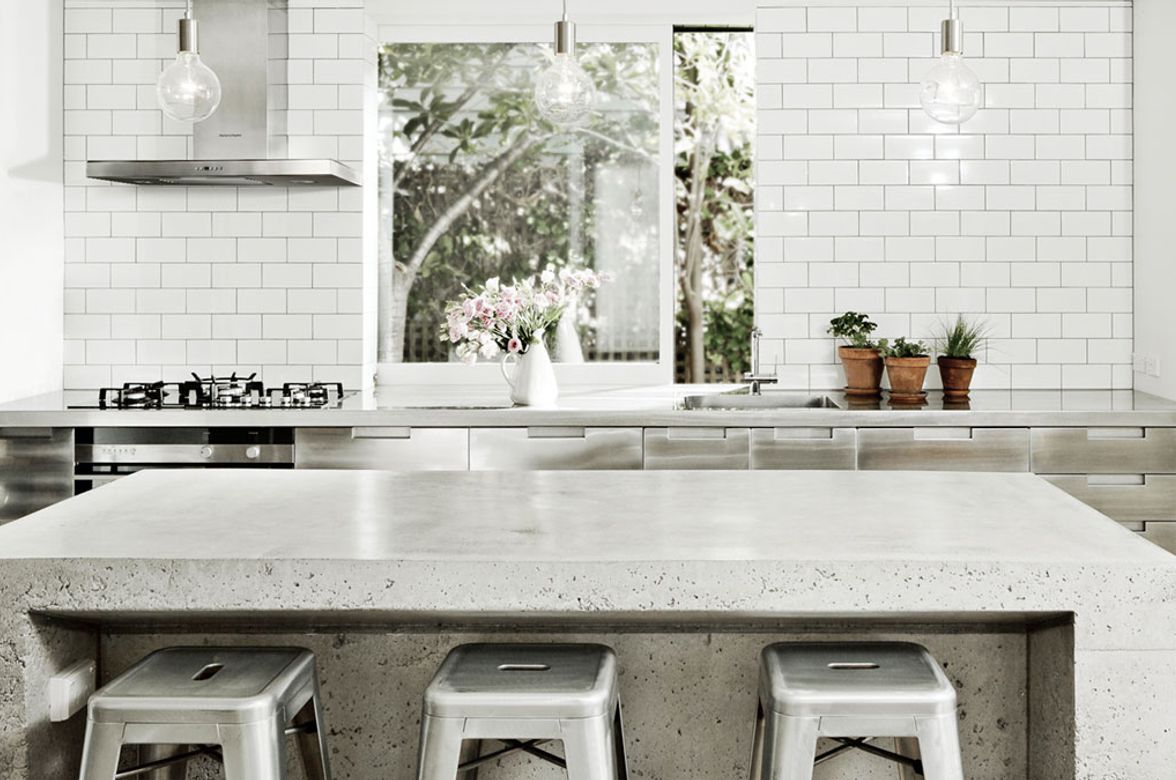Headland House Kitchen

CONCEPT DESIGN:
Gary Lawson and Nick Stevens always design the kitchens within their houses because it is important to them that the kitchen doesn’t become an alien insertion into the space. Rather, Gary explains that they try to weave the kitchen into the DNA of the architecture. The broader aspects of the house – in this house the organic pod forms and the stepped cedar boards – are distilled into details.
At the far end of the kitchen is a generous window with a view to the northeast, looking down along a small beach. The kitchen is filled with morning sun before other areas of the house, lending a subtle diurnal directive of how to inhabit the space. As the sun swipes along the surface of the cabinetry, rich shadows and highlights are created along the ridged cedar, lending more depth to the materiality.
Seen from the exterior, the three curved pods are all clad in a consistent skin of vertical rough-sawn cedar that are irregularly stepped to create texture and shadow over the surface. As you move inside the house, this cladding continues seamlessly to the interior, clearly defining the three discrete spaces of the lounge, main bedroom and veranda.
Within the Y-shaped space in between these pods where the living, dining and kitchen are placed, the layout of the kitchen developed from thinking about how the kitchen would be used.
Gary says, “Of course you think about relationships between the sink and the oven and the fridge and things that you go to regularly. But its probably more about thinking about the kitchen socially, how it will work. In a house like this, which is about relaxation, you’re going to have people sitting around the kitchen interacting and talking at all times of the day. It’s about making the kitchen easy to use for big groups with a pantry where you can just dump mess.”
DEVELOPED DESIGN:
You wouldn’t realise that there is a large pantry tucked in behind the kitchen. In the same way the doors leading into the main bedroom or lounge have been concealed within the striations of cedar, the pantry also has a hidden door. This allows the rigor of the cedar to not be disjointed with standard, flat doors in jambs. The handles of the cabinetry were also seamlessly integrated into the vertical cedar boards.
In the same way, the kitchen island mimics the curved forms of the pods, embodying the big ideas in a small way, and it too is clad in the same ribbed cedar. Here again a clear nod to functionality in the straight edge of the island creating the working bench, with the island curving around underneath the cantilevered bench to form bar seating.
As the cedar continued across the back wall of the kitchen, there was a significant amount of time spent on finding the best compromise between the client’s desire for cleanability and durability of the surfaces and this visual uniformity of the pods’ ridged skin. In this area the timber needed to be sealed, but coatings on top of a bandsawn strip would look, as Gary describes, like it was dipped in syrup.
The alternative, entirely smooth-planed planks, would have been obviously different and disrupted the seamless skin. The architects and clients went through ten different options of various surface textures and coatings before finally arriving at a sanded back version of the bandsawn cedar – a de-nibbed surface that was then coated with a polyurethane to make the timber cleanable, but also virtually identical in look and texture to the rest of the wall.
DETAIL DESIGN:
This is a kitchen that is all about the detail. Particular care has been taken to make the appliances and cabinetry integrate into the form and materiality of the house. It is not just the placement and general layout of the appliances that received attention here, but consideration was paid to the tiniest detail of how far the DishDrawer™ handle would jut out, the exact shape of routing of the custom handle pull, and how to minimise the separation between cooktop and oven. What has resulted is a kitchen that is not just aesthetically pleasing, but works at the minute tactile level as well.
No project details available for this project.
Request more information from this professional.
Professionals used in Headland House Kitchen
More projects by Fisher & Paykel Appliances
About the
Professional
Fisher & Paykel has been designing products to change the way people live since 1934.
Our design philosophy is underpinned by a curiosity about people — how they live, what they do and how they use things.
This approach has helped us understand the dynamic nature of modern living, and to challenge conventional appliance design to consistently deliver products that are intuitive, timeless, and beautiful to use.
KITCHEN PERFECTION
At Fisher & Paykel, we design products according to three key principles — Ultimate Kitchen Solutions, the Beauty of Choice and Design Freedom — so you can create Kitchen Perfection.
ULTIMATE KITCHEN SOLUTIONS
To create the perfect meal, you need a suite of products working seamlessly together to create a beautiful kitchen experience. Cooking and cooling solutions that respect ingredients through the Mastery of Temperature. Exceptional dishwashing and ventilation solutions that deliver perfect results every time.
THE BEAUTY OF CHOICE
All homes are different, they demand different architectural and aesthetic responses. The Beauty of Choice is the ability to choose the perfect product style and integration option to create your perfect kitchen — for complete functionality without compromising design.
DESIGN FREEDOM
As the heart of the home, the kitchen serves as both a practical, multi-functional space and an architectural statement. Design Freedom is the ability to customise a kitchen layout with work zones that exactly suit how you want to live, cook and entertain, and personalise design details to achieve a highly considered, bespoke design.
- ArchiPro Member since2015
- Follow
- Locations
- More information
Why ArchiPro?
No more endless searching -
Everything you need, all in one place.Real projects, real experts -
Work with vetted architects, designers, and suppliers.Designed for New Zealand -
Projects, products, and professionals that meet local standards.From inspiration to reality -
Find your style and connect with the experts behind it.Start your Project
Start you project with a free account to unlock features designed to help you simplify your building project.
Learn MoreBecome a Pro
Showcase your business on ArchiPro and join industry leading brands showcasing their products and expertise.
Learn More